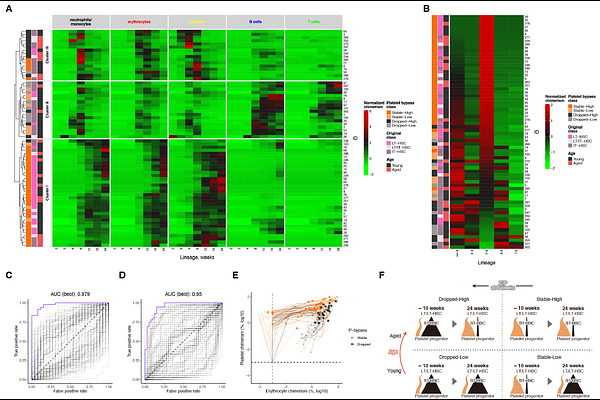Stable platelet production via the bypass pathway explains the long-term reconstitution capacity of hematopoietic stem cells

Stable platelet production via the bypass pathway explains the long-term reconstitution capacity of hematopoietic stem cells
Iwanami, S.; Sato, T.; Haeno, H.; Xu, L.; Imamura, K.; Ooehara, J.; Lan, X.; Nakauchi, H.; Iwami, S.; Yamamoto, R.
AbstractPrecise understanding how hematopoietic stem cells (HSCs) differentiate in vivo is difficult because we can not trace the in vivo differentiation of HSCs. The single-cell transplantation assay and our own paired daughter cell assay of phenotypic HSCs has revealed the presence of HSCs with reconstitution capacity whose differentiation potential is restricted to the myeloid lineage (MySCs) and the presence of novel direct differentiation pathway form HSCs to MySCs (named myeloid bypass pathway). However, how HSCs differentiate in vivo during hematopoiesis has remained unclear since the paired daughter cell assay was performed partially ex vivo. Aiming to characterize HSCs, including the myeloid bypass pathway, we examined the kinetics of HSC differentiation using a mathematical model. We analyzed data from single-cell transplantation assays in which five blood cell lineages were followed successively after transplantation. An age-related skewing to the myeloid lineage was quantitatively indicated as the production of B cells reduced with age. Dependence on platelet bypass increased with aging and consistently high dependence was associated with long-term reconstitution capacity of the HSCs. Focusing on the ratio of chimerism among cell lineages, the characteristics of dependence on platelet bypass can be accurately determined by the ratio of erythrocyte to platelet chimerism at 8 weeks after transplantation. This new identification criterion is an indicator of long-term reconstitution of HSCs that does not rely on observation of long-term transplantation experiments. These findings reveal the novel characteristics of HSCs related to aging and stemness and highlight the importance of the bypass pathway in HSC differentiation.